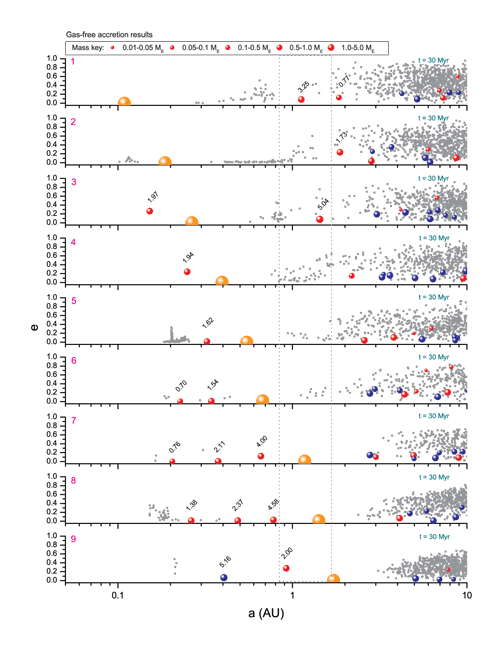Highlights - Volume 498-2 (May I 2009)
- Details
- Published on 04 May 2009
| HIGHLIGHTS: this week in A&A |
Volume 498-2 (May I 2009)
| In section 10. Planets and planetary systems “Terrestrial planet formation in low-eccentricity warm-Jupiter systems”, by M.J. Fogg and R.P. Nelson, A&A 498, p. 575 Fogg and Nelson show that terrestrial planets may even form in systems that contain Jupiter-mass planets close to their star. To do so they have combined N-body and hydrodynamical calculations of a system of protoplanet and circumstellar gaseous disks. |
|
|
In section 1. Letters
“Universality of young cluster sequences”, S. Pfalzner, A&A 498, p. L37 The relationship between star formation in “starbursts” and star formation in nearby clusters in the Galactic spiral arms is of considerable interest both in its own right and because of the light it may shed on star formation at high z. The Letter by Pfalzner highlighted in this issue shows that it is possible to divide clusters in our galaxy into two groups according to their position in the cluster density-radius plane. Another intriguing result is that the starting point for the evolution of these two groups appears to be within two rather confined density ranges. |
You can now receive the A&A weekly Highlights by email. To subscribe to the A&A Highlights emailing list, please send an email to This email address is being protected from spambots. You need JavaScript enabled to view it.
© Astronomy & Astrophysics 2009


